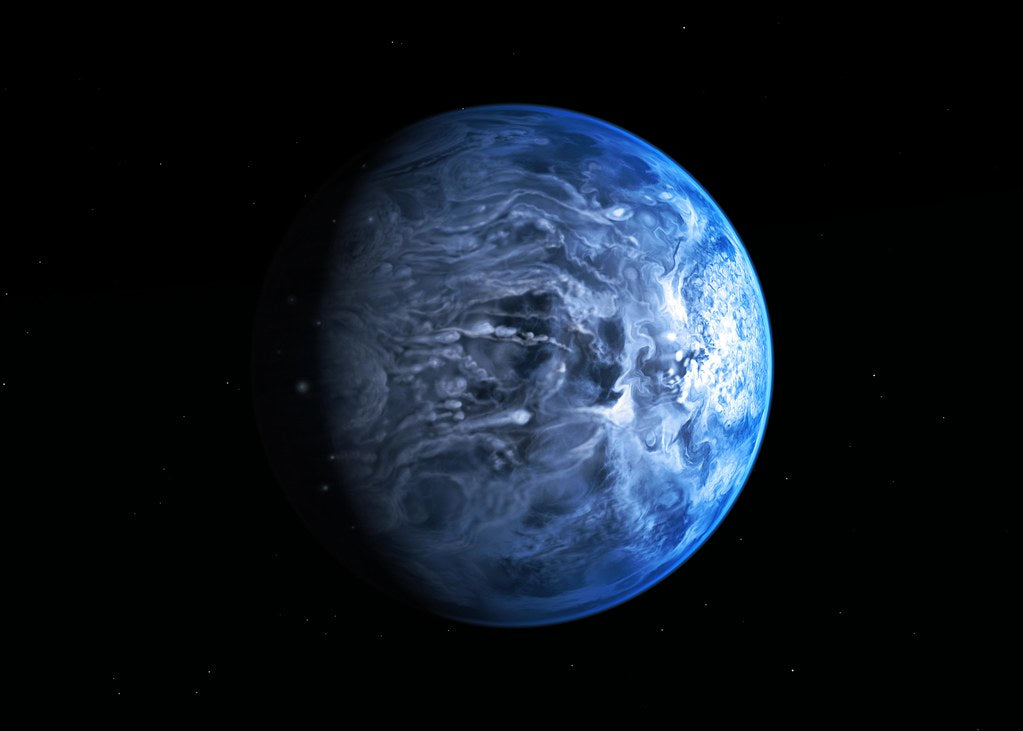HOW DID WE FIND EXOPLANETS AND WHY DOES IT MATTER
29th October 2019
This year half of the Nobel prize for physics went to Michael Mayor and Didier Queloz, for their discovery of exoplanets outside of our solar system. This discovery opened a field that had been struggling to get started before this breakthrough. How did they find this planet and what did this discovery do, both for the world of astrophysics and the wider community?
The first thing to note about this discovery is that no part of it was trivial, with the discovered exoplanet being more than 50 light-years away. This is approximately 4.73 x 1017 metres away, or the distance from the earth to the sun 3 billion times. To put this distance into context Voyager 1 is the furthest man-made object from earth and is less than 0.00000003% of the way to this planet. With these distances in mind it is easy to see how spotting something as small as Jupiter becomes much more of a challenge.
Something of this size could never be spotted using traditional methods. The two scientists needed to find a way of detecting these planets without being able to spot them directly. With this in mind they started to work with the radial-velocity method (Doppler Spectroscopy). This method looks at the wavelengths of light that a star produces. With no outside factors this will remain constant as the star continues the process of nuclear fusion. However, if the star has an orbiting exoplanet this all begins to change.
As the planet orbits the star it has a gravitational effect on the stars position. Just as the star pulls the planet into an orbit the planet will also influence the star. As it goes from one side the other it will pull the star in its own small orbit. This causes the star to oscillate. This movement causes something known as a Doppler Shift. This is a shift in the wavelength produced by a source based on its relative velocity and acceleration. Think of this like standing on a street as an ambulance drives towards you. As it speeds past there is a noticeable shift in the sound it makes


As the planet orbits the star, the star moves following the path of the planet accelerating around an orbit as it does. This acceleration changes the wavelength we observe here on earth. By measuring this fluctuation, we can find the period of the planets orbit and several other important factors like mass and orbital velocity. This method was used in 1995 by the Nobel prize winners to find the first exoplanet orbiting a solar type start outside our solar system.
This discovery was a long time in the making with this method first being suggested in 1952 but the technological limitations at the time meant that it couldn’t be used to detect any new exoplanets. The major step that Didier Queloz made was building a spectrometer powerful enough to capture this oscillation. They also needed to create software that could analyse all the data captured and show whether the star has an orbiting planet.
The discovery of 51 Pegasi B was announced on 6th October 1995 and confirmed using similar methods less than a week later. The staggering thing about this discovery was the orbital period of the planet. 4 days, that’s how long it took a planet the size of Jupiter to pass around the star. This period first seemed impossible but repeat measurements showed it to be accurate.
This discovery was ground-breaking in the field of astrophysics, never before had we found a planet orbiting a star. It sparked interest across the world with the prospect of finding other habitable planets where life could potentially have formed. Since this discovery over 4,000 exoplanets have been discovered with around a quarter of those being found using this same method. This ground-breaking technique drove forward the field of astrophysics to new and lofty heights
Why does it matter?
This is a question that has long plagued scientists at the forefront of discovery: what is the use, what will it do, why does it matter. For some science there can be clearly defined answers. The method can help cure disease or lower energy use, for something like this the applications are not as clear.
With our planet on the verge of climate catastrophe these new planets could be the next step. The place humanity can go to survive. However even the Nobel prize winners disagree with this. As pointed out earlier this distance is at a scale that we can’t even begin to imagine let alone travel. Certainly almost all of the planets that have been discovered are uninhabitable or out of reach.
But that doesn’t mean the discovery doesn’t have a point, science drives science. By discovering something as major as a new planet we open the eyes of the world to the possibilities that are out there. If we can find new planets what else can we look for, what else can we find. Who knows maybe the people who will bring some of these new planets within reach may have been inspired by the work done by these Nobel Prize winners.

In the words of Issac Newton and many others “If I have seen a little further it is by standing on the shoulders of Giants."
